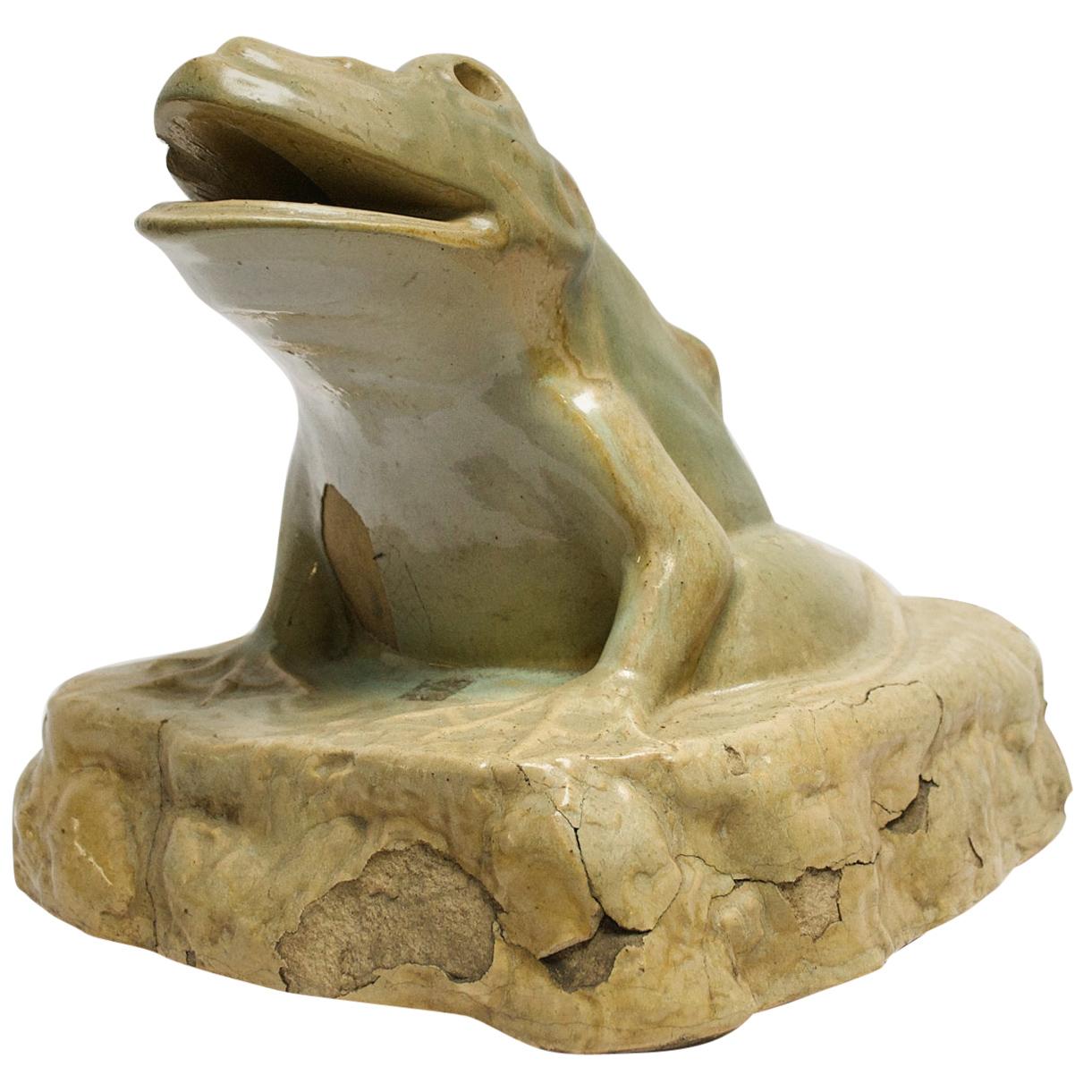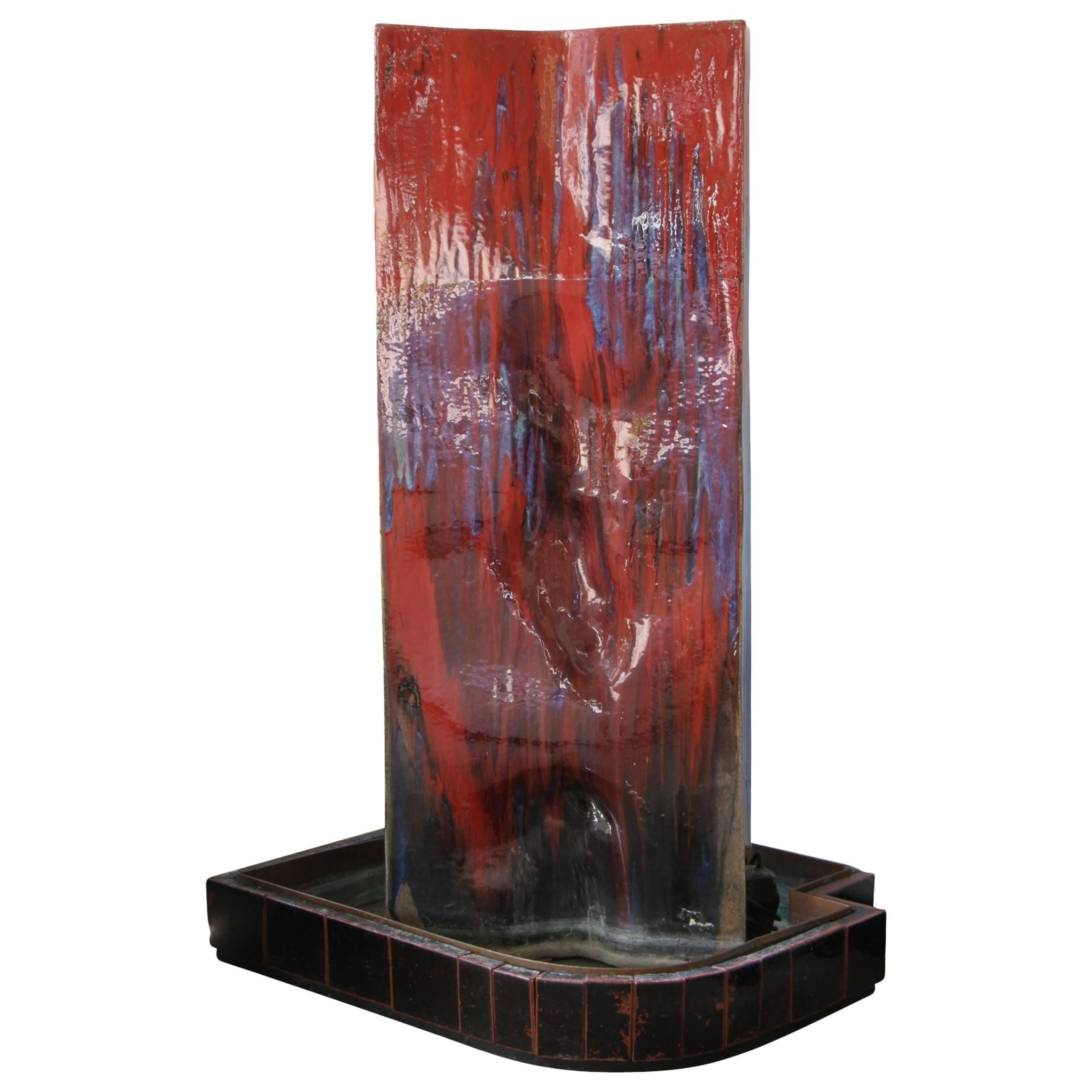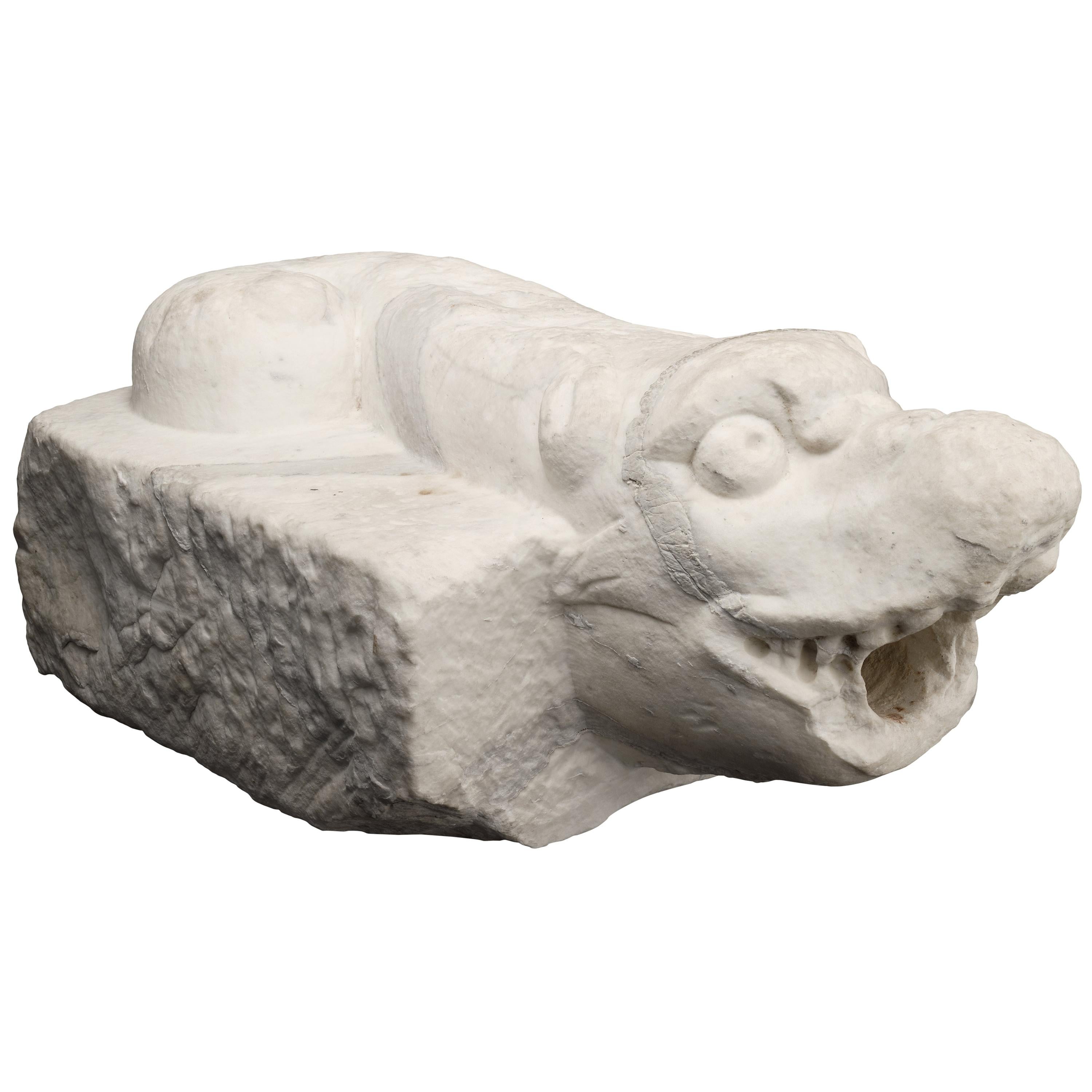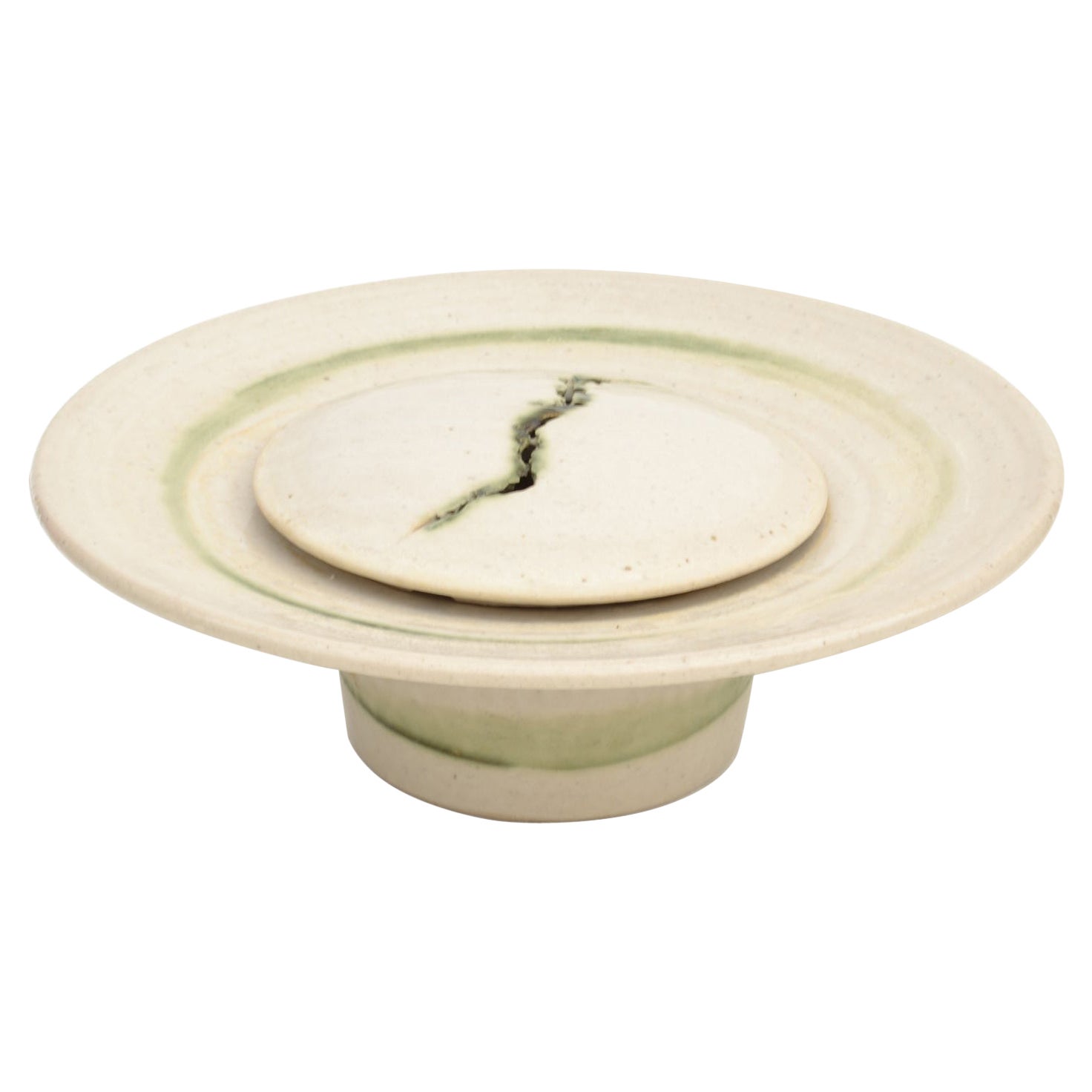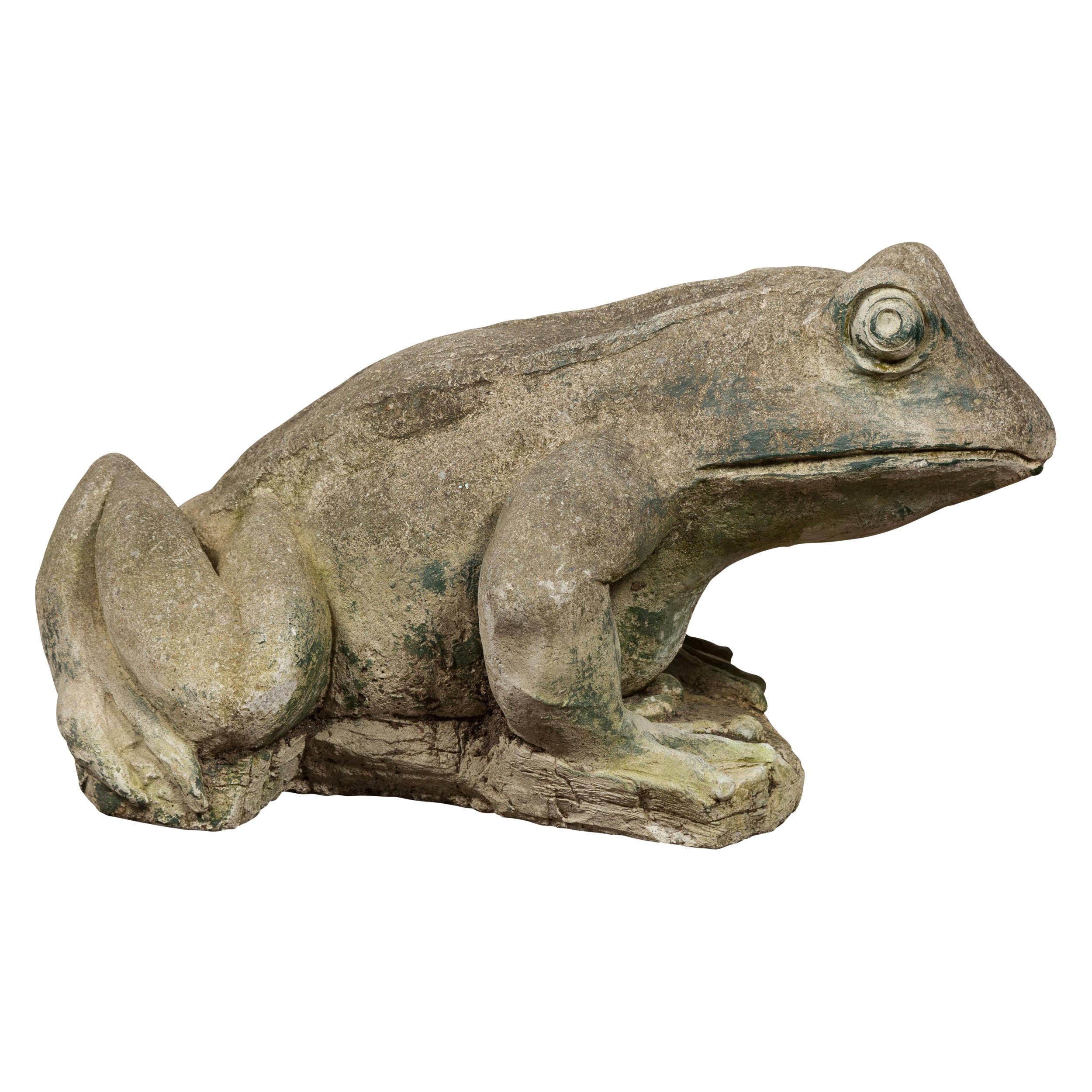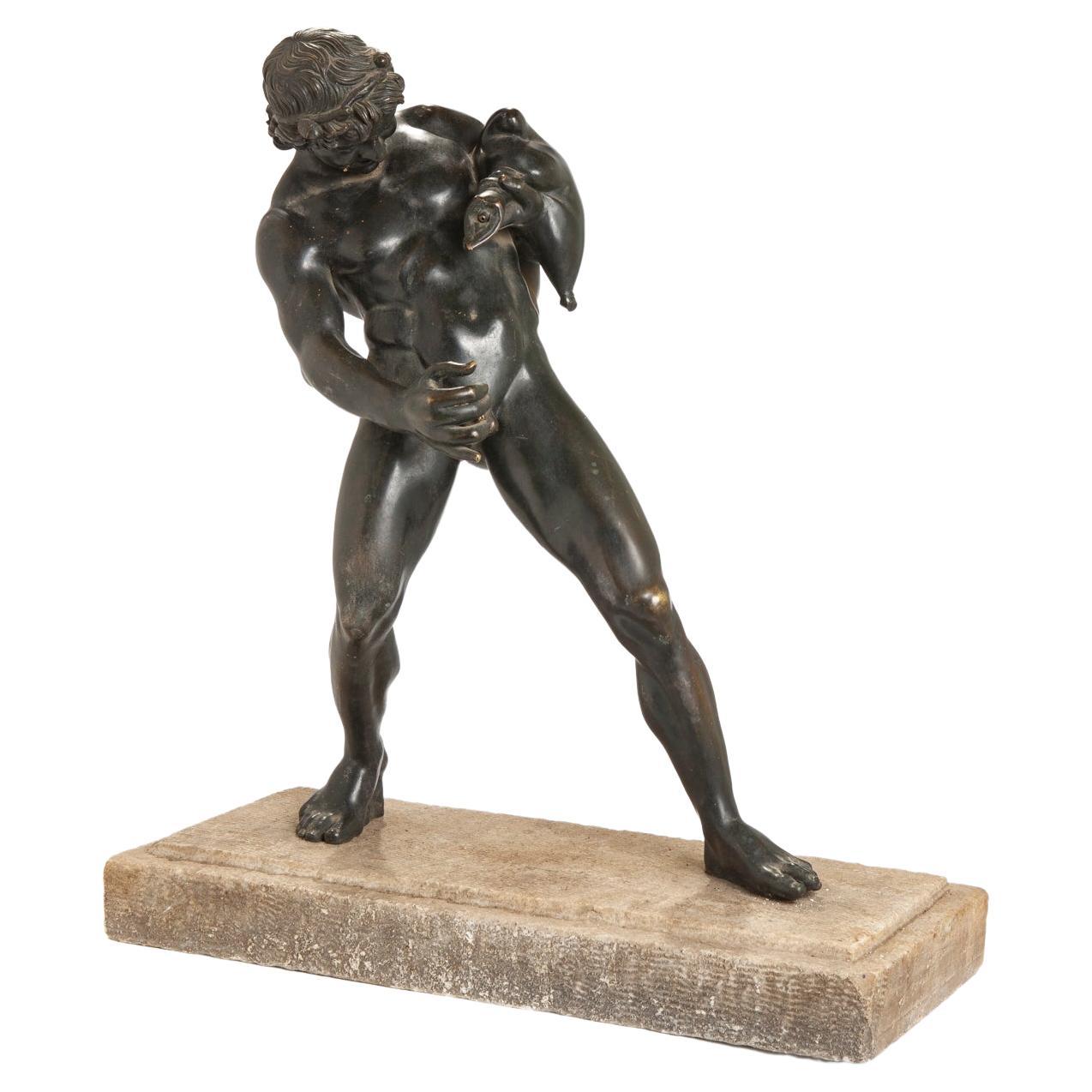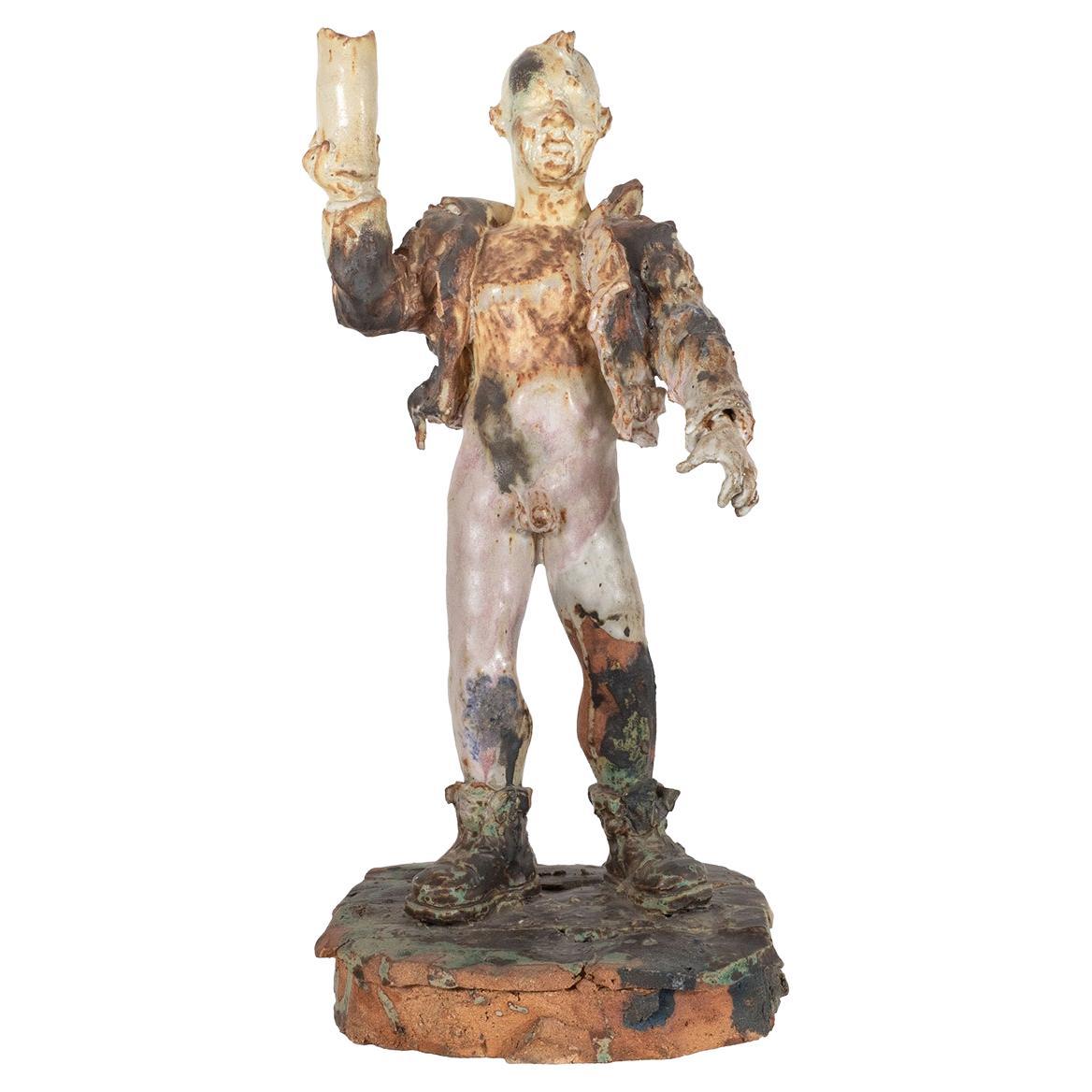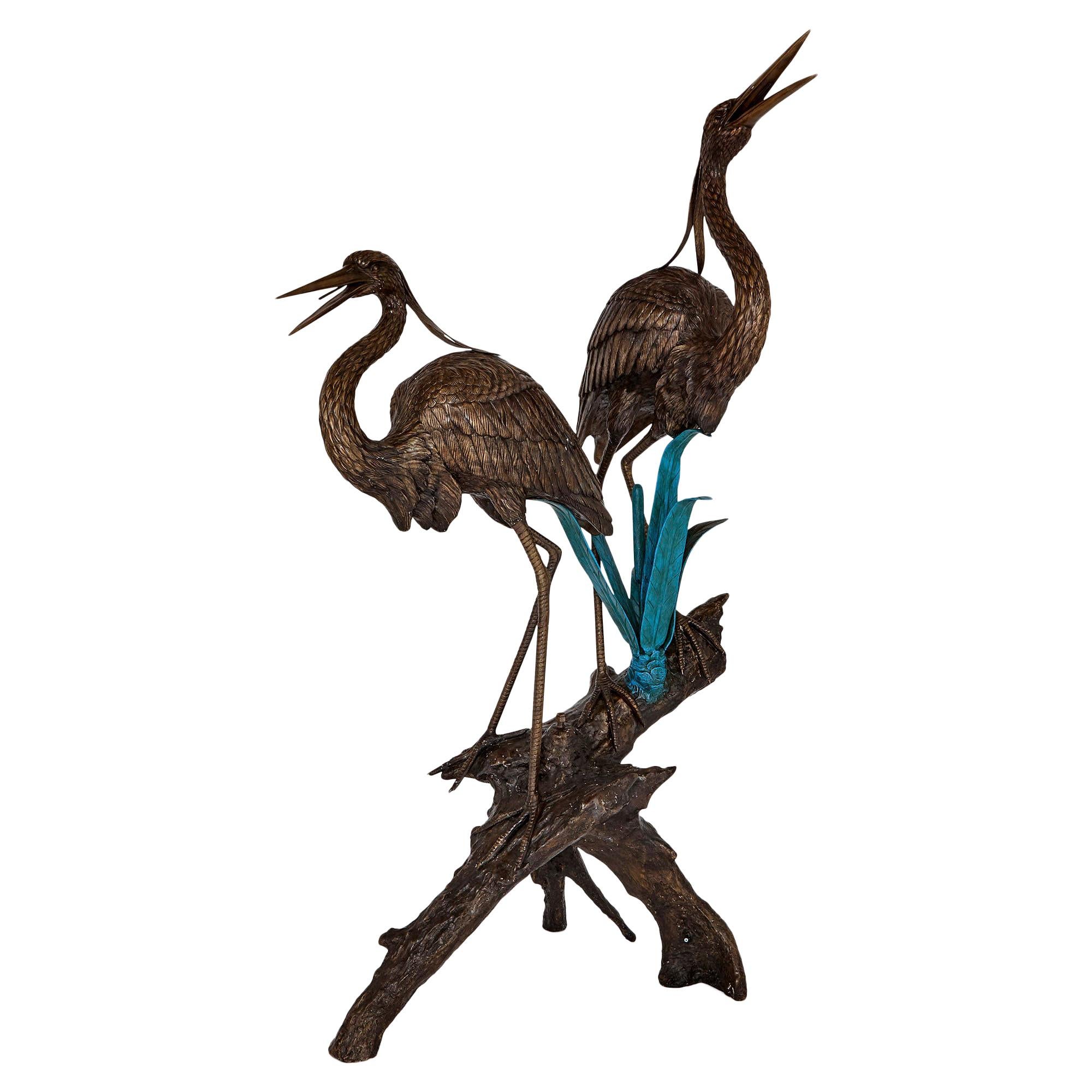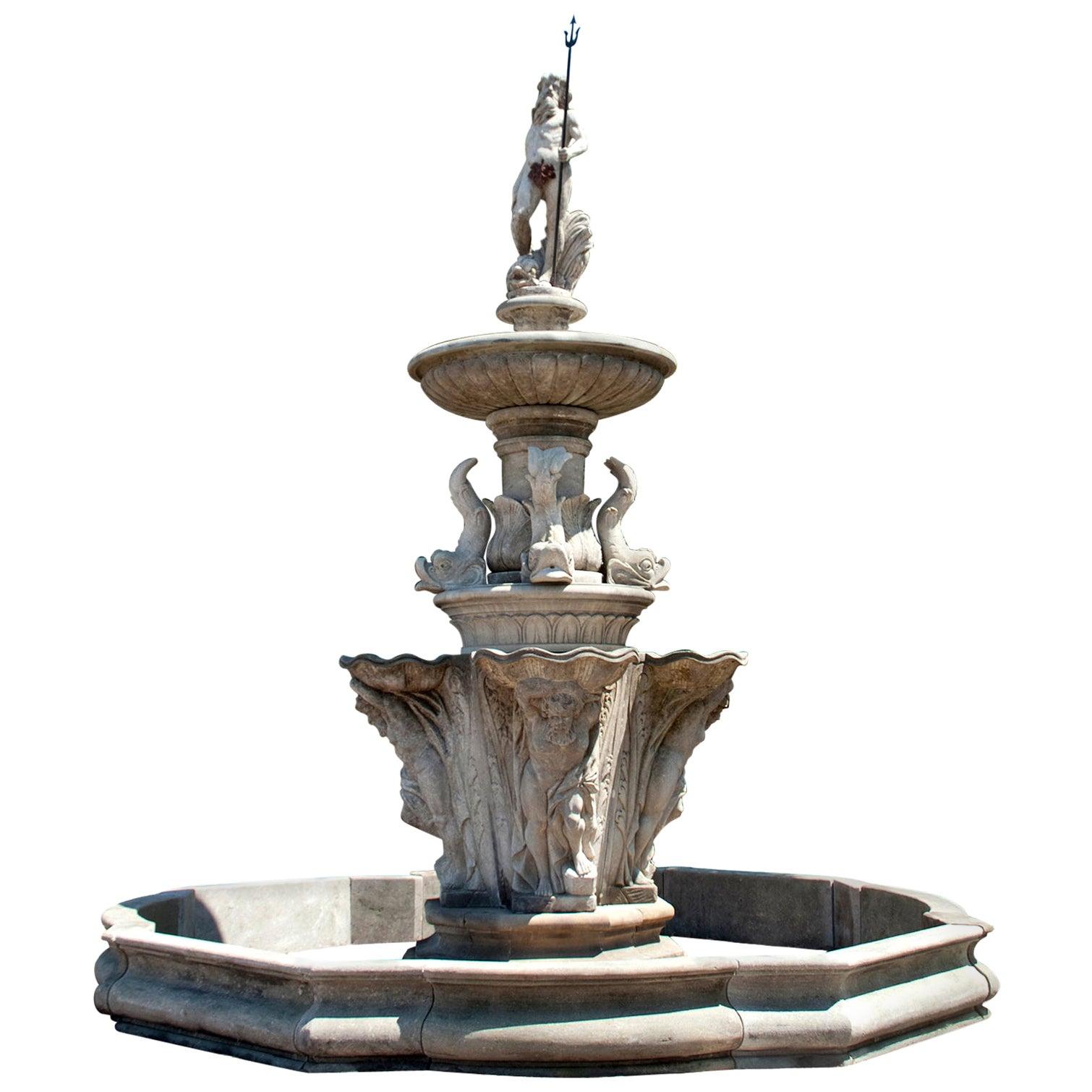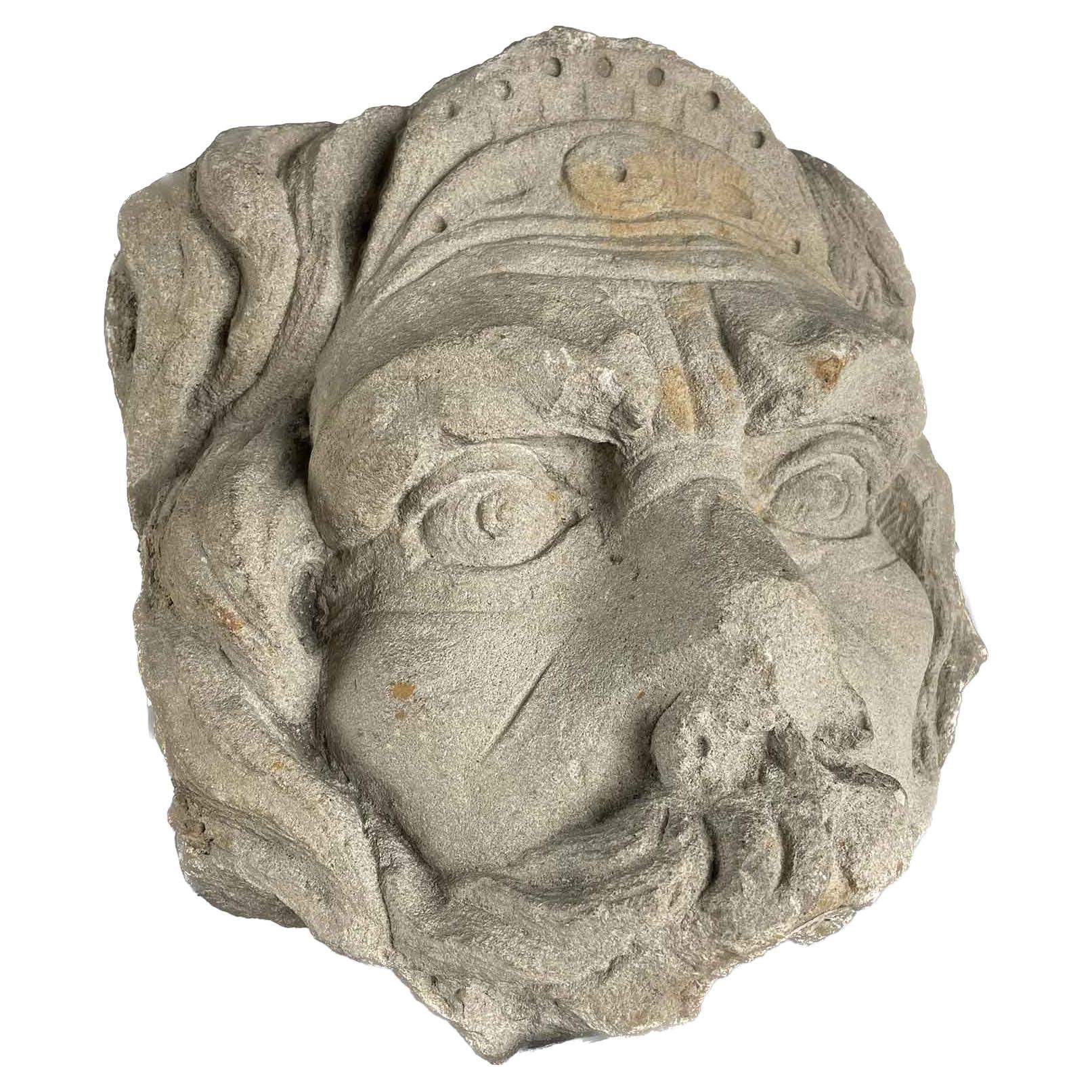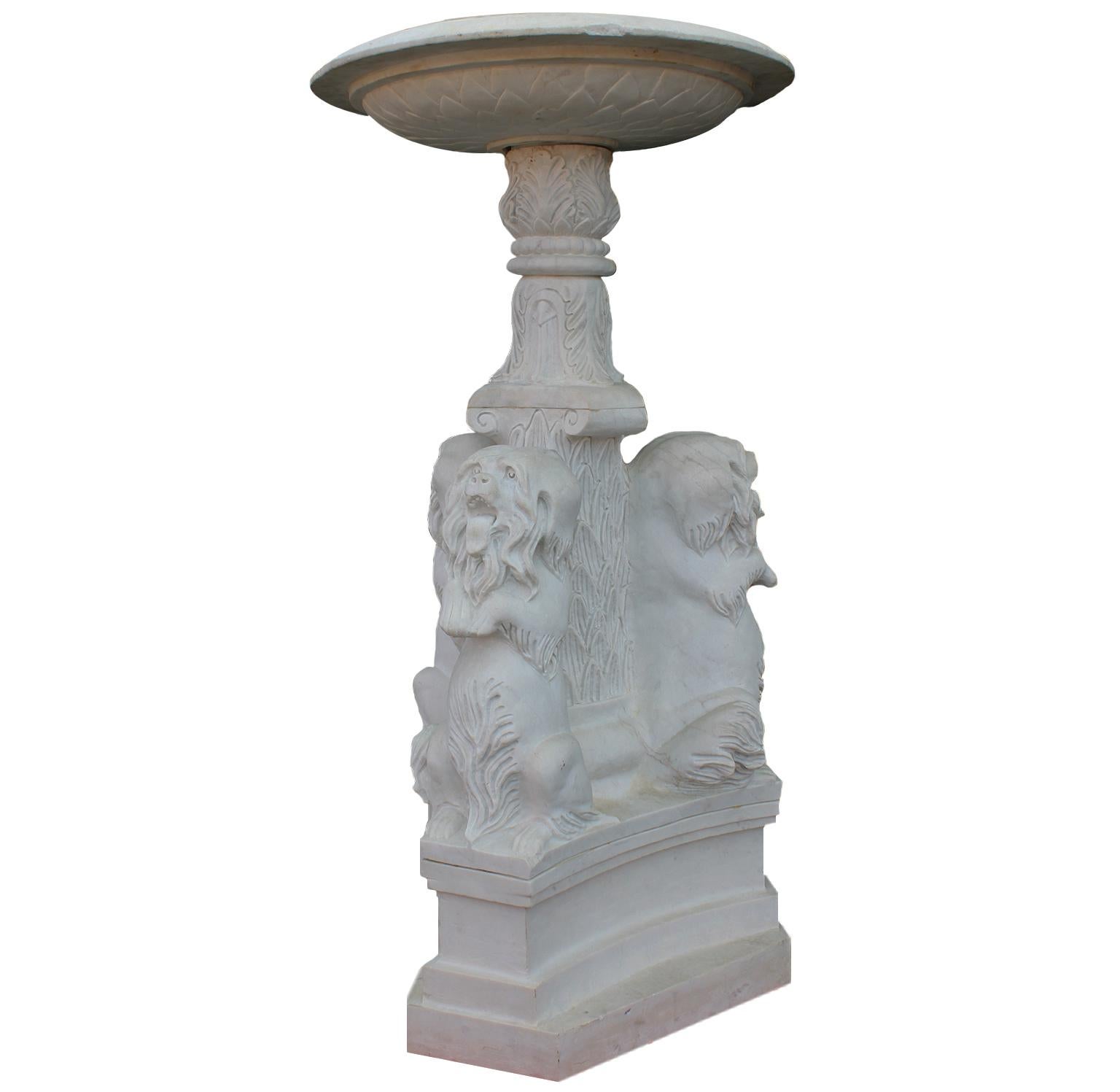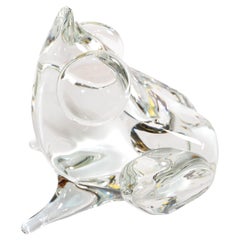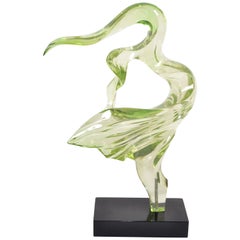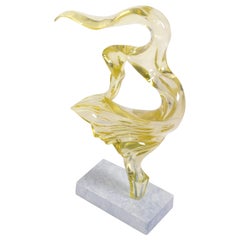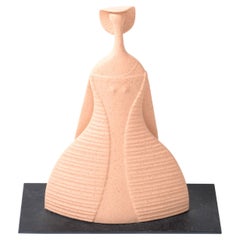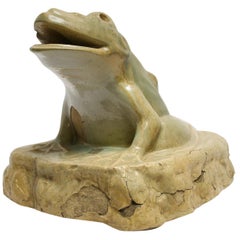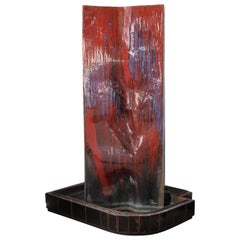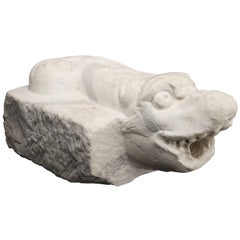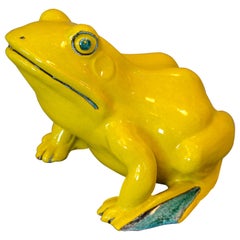
Italian Neon Yellow & Green Ceramic Fountain Frog Outdoor Sculpture, Pottery
View Similar Items
Want more images or videos?
Request additional images or videos from the seller
1 of 14
Italian Neon Yellow & Green Ceramic Fountain Frog Outdoor Sculpture, Pottery
About the Item
- Dimensions:Height: 8 in (20.32 cm)Width: 12 in (30.48 cm)Depth: 10.5 in (26.67 cm)
- Style:Mid-Century Modern (Of the Period)
- Materials and Techniques:Ceramic,Glazed
- Place of Origin:
- Period:
- Date of Manufacture:1975
- Condition:Wear consistent with age and use. The Frog has no breaks or chips just normal light wear to the base. Please see the pictures.
- Seller Location:Miami, FL
- Reference Number:Seller: 112019/8001stDibs: LU886316818542
About the Seller
5.0
Platinum Seller
Premium sellers with a 4.7+ rating and 24-hour response times
Established in 2001
1stDibs seller since 2010
723 sales on 1stDibs
Typical response time: 1 hour
Authenticity Guarantee
In the unlikely event there’s an issue with an item’s authenticity, contact us within 1 year for a full refund. DetailsMoney-Back Guarantee
If your item is not as described, is damaged in transit, or does not arrive, contact us within 7 days for a full refund. Details24-Hour Cancellation
You have a 24-hour grace period in which to reconsider your purchase, with no questions asked.Vetted Professional Sellers
Our world-class sellers must adhere to strict standards for service and quality, maintaining the integrity of our listings.Price-Match Guarantee
If you find that a seller listed the same item for a lower price elsewhere, we’ll match it.Trusted Global Delivery
Our best-in-class carrier network provides specialized shipping options worldwide, including custom delivery.More From This Seller
View AllLicio Zanetti Abstract Murano Glass Frog Sculpture Italy Mid-Century Modern
By Zanetti Murano, Licio Zanetti
Located in Miami, FL
Licio Zanetti abstract Murano glass Frog made in Italy, Mid-Century Modern.
Made with the Massello Technique, developed by Flavio Poli in the 1920s, ...
Category
Late 20th Century Italian Mid-Century Modern Animal Sculptures
Materials
Art Glass
1980 Tall Neon Green Mid-Century Modern Abstract Lucite Sculpture on Black Base
Located in Miami, FL
Abstract 28 inches tall neon green Lucite sculpture mounted on a black lacquered wooden base from the 1980s.
Mid-Century Modern era.
O-594-335
Category
Vintage 1980s American Mid-Century Modern Abstract Sculptures
Materials
Lucite, Wood
Tall Neon Yellow Mid-Century Modern Abstract Lucite Sculpture on White Base 1980
Located in Miami, FL
Abstract 28 inches tall neon yellow Lucite sculpture mounted on a white faux marble look wooden base from the 1980s.
Fine Art from the Mid-Century Modern era.
O-597-335
Category
Vintage 1980s American Mid-Century Modern Abstract Sculptures
Materials
Lucite, Wood
Lineasette Italy Ceramic Lady Hat Figurative Sculpture Slate Base
Located in Miami, FL
Lineasette Italy Vintage peach colored hand carved ceramic lady figurine or table sculpture Mid-Century Modern.
Figurative sculpture depicting a Lady with...
Category
Late 20th Century Italian Mid-Century Modern Figurative Sculptures
Materials
Slate
Mint Green Italian Scavo Glass Aubergine Eggplant Figurine Vegetable Sculpture
By Murano 5
Located in Miami, FL
Mid-Century Modern mint green Scavo glass Murano art glass Aubergine Figurine, Eggplant Sculpture made in Italy in 1980.
Handcrafted Vegetable from the Masters in the Art Glass Metro...
Category
Vintage 1980s Italian Mid-Century Modern Figurative Sculptures
Materials
Murano Glass
Luca CL Marked Colorful Ceramic Elephant Sculpture Mid-Century Modern Italy 1970
Located in Miami, FL
Luca CL Marked colorful ceramic elephant sculpture Mid-Century Modern Italy 1970.
Marked at the Base. CL Luca.
Beautifully handcrafted animal sculp...
Category
Late 20th Century Italian Mid-Century Modern Animal Sculptures
Materials
Ceramic
You May Also Like
Architectural Ceramic Water Fountains Sculptures Bronze Glazed 1960 Mobach
By Mobach
Located in London, GB
The sculptural head shaped water features hand-turned in ceramic, produced by Mobach in Utrecht during the 1960's. Mobach produced this unique mat bronze lustre glaze has a result of...
Category
Vintage 1960s European Mid-Century Modern Abstract Sculptures
Materials
Ceramic
Glazed Ceramic Frog Fountain Head
Located in Bloomfield Hills, MI
This vintage ceramic frog fountain is a charming statue that can be used in a water feature or Stand alone as a hidden garden friend. Opening at base to ...
Category
Early 20th Century European Fountains
Materials
Ceramic
Monumental Artist Made Ceramic Fountain
Located in Bridgeport, CT
Well made with spectacular presence and color. The fountain stands in a hand-fashioned tiled metal basin. May be used in the garden, on the deck, or in an...
Category
20th Century American Mid-Century Modern Fountains
Materials
Ceramic
Italian Ancient Marble Sculpture Fountain, Late 16th Century
Located in Milano, IT
Sea monster
Carrara marble mouth fountain
Italy, late 16th century
It measures 13.8 x 31.5 x 18.9 in (35 x 80 x 48 cm)
State of conservation: some small evident gaps and widespread signs of wear due to outdoor exposure. The gray marks crossing it do not come from restoration, but are rather the natural veins of the marble.
This work has some morphological characteristics typically associated with the iconography of the sea monster: an elongated muzzle, sharp teeth, protruding eyes, elongated ears, and a coiled serpent's tail.
An in-depth series of studies on artistic depictions of the sea monster attempted to verify how this symbol evolved in antiquity in the European and Mediterranean contexts and how it gradually changed its image and function over time. The iconography itself is mutable and imaginative and its history is rich with cultural and artistic exchange, as well as the overlapping of ideas. This occurred so much that it is difficult to accurately pinpoint the "types" that satisfactorily represent its various developments.
However, we can try to summarize the main figures, starting from the biblical Leviathan and the marine creature that swallowed Jonah (in the Christian version, this figure was to become a whale or a "big fish", the “ketos mega”, translation of the Hebrew “dag gadol”). Other specimens ranged from the dragons mentioned in the Iliad (which were winged and had legs) to "ketos” (also from Greek mythology), the terrifying being from whose Latinized name (“cetus”) derives the word "cetacean". See J. Boardman, “Very Like a Whale” - Classical Sea Monsters, in Monsters and Demons in the Ancient and Medieval Worlds, in Papers presented in Honor of Edith Porada, Mainz am Rhein 1987, pp. 73-84).
In Italy the monster underwent yet further variations: it can be found in Etruscan art on the front of some sarcophagi representing the companion of souls, while among the Romans we find the “Pistrice” (cited by Plinio in Naturalis Historia PLIN., Nat., II 9, 8 and by Virgilio in Eneide: VERG., Aen., III, 427), which appeared in the shape of a stylized hippocampus or a very large monstrous cetacean and evolved into a hideous being with a dragon's head and long webbed fins.
During the Middle Ages, the sea monster was the object of new transformations: at this time, it is often winged, the head is stretched like a crocodile, the front legs are often very sharp fins - sometimes real paws - until the image merges with dragons, the typical figures of medieval visionary spirituality widely found throughout Europe (on this topic and much more, see: Baltrušaitis, J., Il Medioevo fantastico. Antichità ed esotismi nell’arte gotica, Gli Adelphi 1997).
In Italy during the 15th and 16th centuries, the revival of classicism - representative of the humanistic and Renaissance periods - led to a different reading of these "creatures". Indeed, the sea monster was also to find widespread use as an isolated decorative motif, especially in numerous fountains and sculptures where dolphins or sea monsters were used as a characterizing element linked to water (on this theme see: Chet Van Duzer, Sea Monsters on Medieval and Renaissance Maps, London, The British library, 2013).
From the morphological point of view, the "sea monsters" of this period are mostly depicted as hybrid figures, in which the body of a mythological or real being (a hippocampus, a sea snake, a dolphin), is joined to a head with a rather indistinct appearance. It was usually characterized by large upright ears, an elongated snout, sharp teeth and globular, protruding eyes; a complex and indefinite figure, both from the symbolic point of view and from that of its genesis.
The work we are examining is placed as a cross between the medieval sea serpent and the Renaissance dolphin, with stylistic features which recall the snake as often used in heraldry (such as the "snake" depicted in the coat of arms of the Visconti - the lords and then dukes of Milan between 1277 and 1447 - and which, for some, may be derived from the representations of the “Pistrice” that swallowed Jonah).
In the search for sources, Renaissance cartography and in particular woodcuts should not be neglected. See for example the monsters of Olaus Magnus, from the editions of the “Historia de gentibus septentrionalibus” (“History of the peoples of the north”) and the natural histories of Conrad Gesner, Ulisse...
Category
Antique 16th Century Italian Renaissance Animal Sculptures
Materials
Carrara Marble
Architectural Studio Pottery Fountain by Piet Knepper
By Piet Knepper, Mobach
Located in London, GB
Fountain with two different tops by Piet Knepper for Mobach white glaze with copper oxide details and cracked surface, hand turned studio ceramic .
This is an example of Modern Scho...
Category
Vintage 1980s European Fountains
Materials
Ceramic
American Giant Stone Frog with Patina, Originally Used as a Fountain
Located in Atlanta, GA
An American giant stone frog from the 20th century, with great patina. Made in the USA in 1987, this giant stone stone frog used to be a fountain (notice the remnants of a pipe below...
Category
Vintage 1980s American Animal Sculptures
Materials
Stone

